I’ve just come back from a work day in the Collections “Department” at the Hall of Fame. On a break from our cataloging, we talked about how the Quilters Hall of Fame has evolved since that first induction of six Honorees at the 1979 Continental Quilting Congress. (Shout out to our Founder, Hazel Carter!). So, this week I’m going to give you a recap of our thoughts on how we’ve grown.
For decades, Quilters Hall of Fame was a status; people were named and recognized for their contributions to the world of quilting. Then, beginning in the early 1990s, it took on a physical presence as the Marie Webster home (now a National Landmark in case you didn’t know) was restored and opened in 2004. And since then, it has been growing into a full-fledged museum with exhibits, archives and a collection of significant objects related to the Honorees.
Exhibits; we usually do four a year, and they are really professional—you could say “museum-quality”! Remember when I when I wrote about Jonathan Holstein/ Gail van der Hoof’s Whitney Museum exhibit and talked about how museum space is designed? I quoted Karin Peterson’s research:
Museums can be understood as places where quasi-sacred rituals take place. Rituals that define legitimate objects, legitimate artists and legitimate viewers…. Museum space facilitates an art-for-art’s sake experience by employing a series of architectural and display cues: isolated rooms, small labels, white walls, spotlighted pedestals, space to stand back from works and grasp their effect…. The museum, which is structured to appear neutral, objective and disinterested….
“Discourse and Display: The Modern Eye, Entrepreneurship, and the Cultural
Transformation of the Patchwork Quilt,” Sociological Perspectives. Vol 46, Number 4, 2003
Well, the Webster House obviously wasn’t built as a museum, but it functions well under Peterson’s standards. The upstairs rooms (accessible via elevator) with the doors removed create intimate spaces where you can really get to know the quilts. Take a look at this display from a 2019 exhibit. Whitney has nothing on us!

Downstairs has high ceilings which make the quilts seem grand. Of course, seeing a contemporary quilt hung above a carved and tiled fireplace isn’t exactly neutral, but I find the unexpected juxtaposition is welcome. Here are some shots of the 2020 Edson exhibit so you can see what I mean.
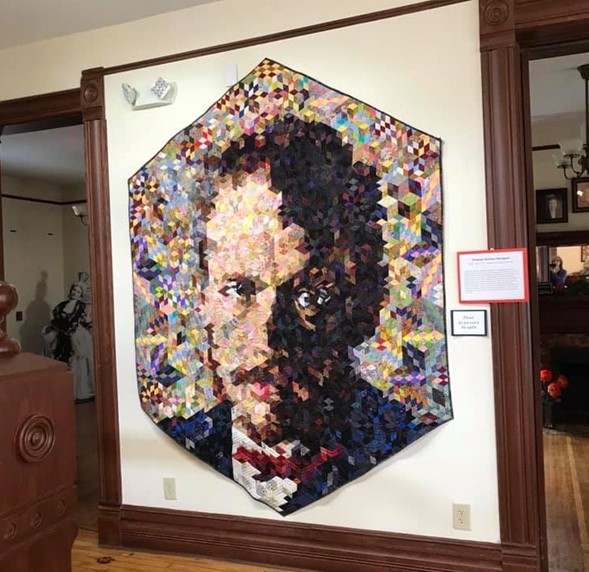
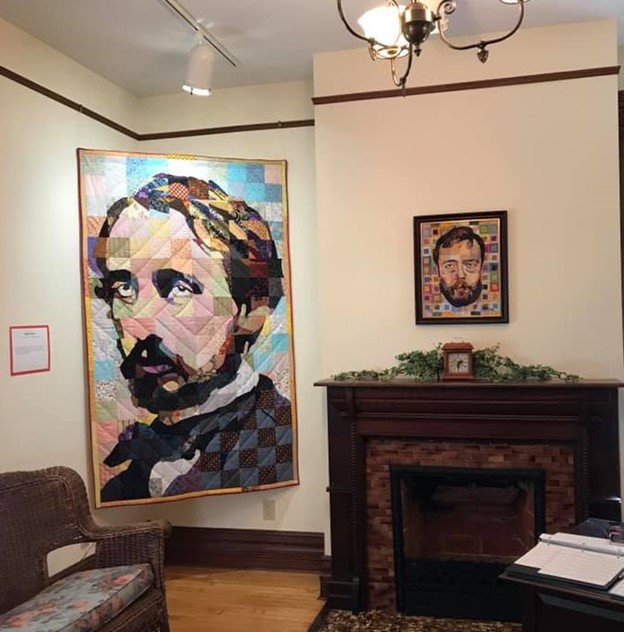
Doesn’t this make you want to plan a visit? If you come soon, you’ll find the exhibit of Hollis Chatelain’s quilts. You’re going to want to see this one. Rather than being a themed exhibit, it’s a special showing of selected quilts over her years of work, so you can get a real visual picture of how the artist’s work has developed; these quilts will not come together again. You may have seen some of her “Stories of West Africa” quilts at Houston or Paducah or one of several quilt museums around the country. If you aren’t familiar with Chatelain, I’d say she’s a spell-caster working in thread. There’s a link to her website below, and here she is with one of her most famous quilts.
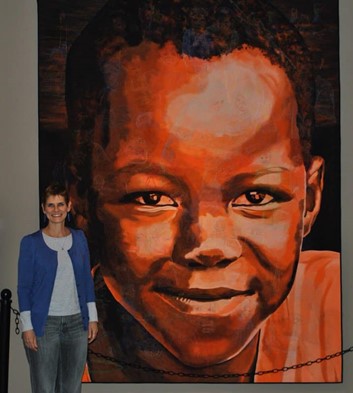
This is a great image by itself, but what you don’t see unless you are standing in front of it are the hundreds of shadow images of other children. You’ve got to go the Hall of Fame and see it (and the other quilts) in person. Hurry; it’s only up until July 24th.But, coming up next will be an exhibit of quilts from this year’s Inductee, Marti Michell, from July 27 – October 2. That will be followed by” Deeds Not Words: Celebrating 100 Years of Women’s Suffrage” which will be shown October 5-December 11.
Along with the exhibits, the Hall of Fame offers lectures and other activities. Here’s a group that appears to be learning about applique quilts.
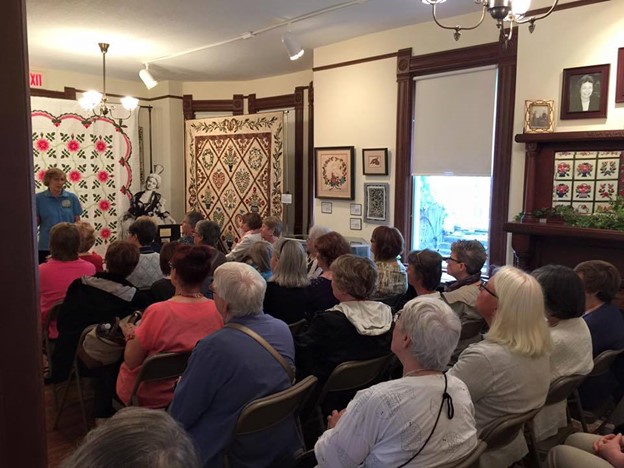
And it’s not just us old-lady quilters who learn. This group of school kids had some specific things on their list; I wonder if it was a scavenger hunt. Here’s where the quilt historian in me comes in: what should these youngsters be told about the two quilts that are shown? What do you think they would tell us about them? And isn’t it wonderful that the Hall of Fame is reaching this generation?
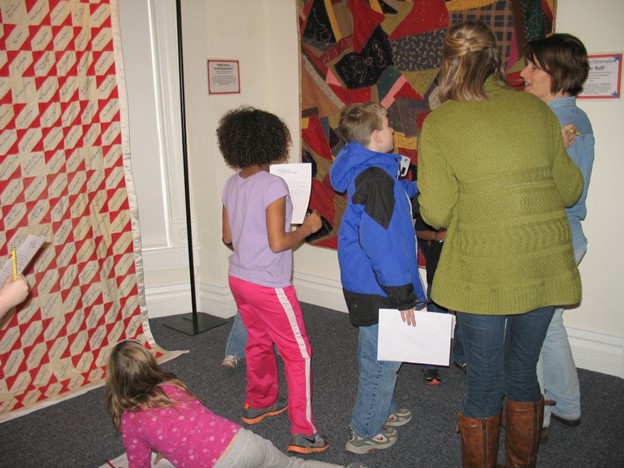
Well, I had planned to tell you about other ways in which Quilters Hall of Fame has grown, but it’s Memorial Day weekend, and I want to get out to my garden. So, I’ll stop here and save Collections (near and dear to my heart) and other aspects for another post.
Your quilting friend,
Anna
Hollis Chatelain website. https://www.hollisart.com/

